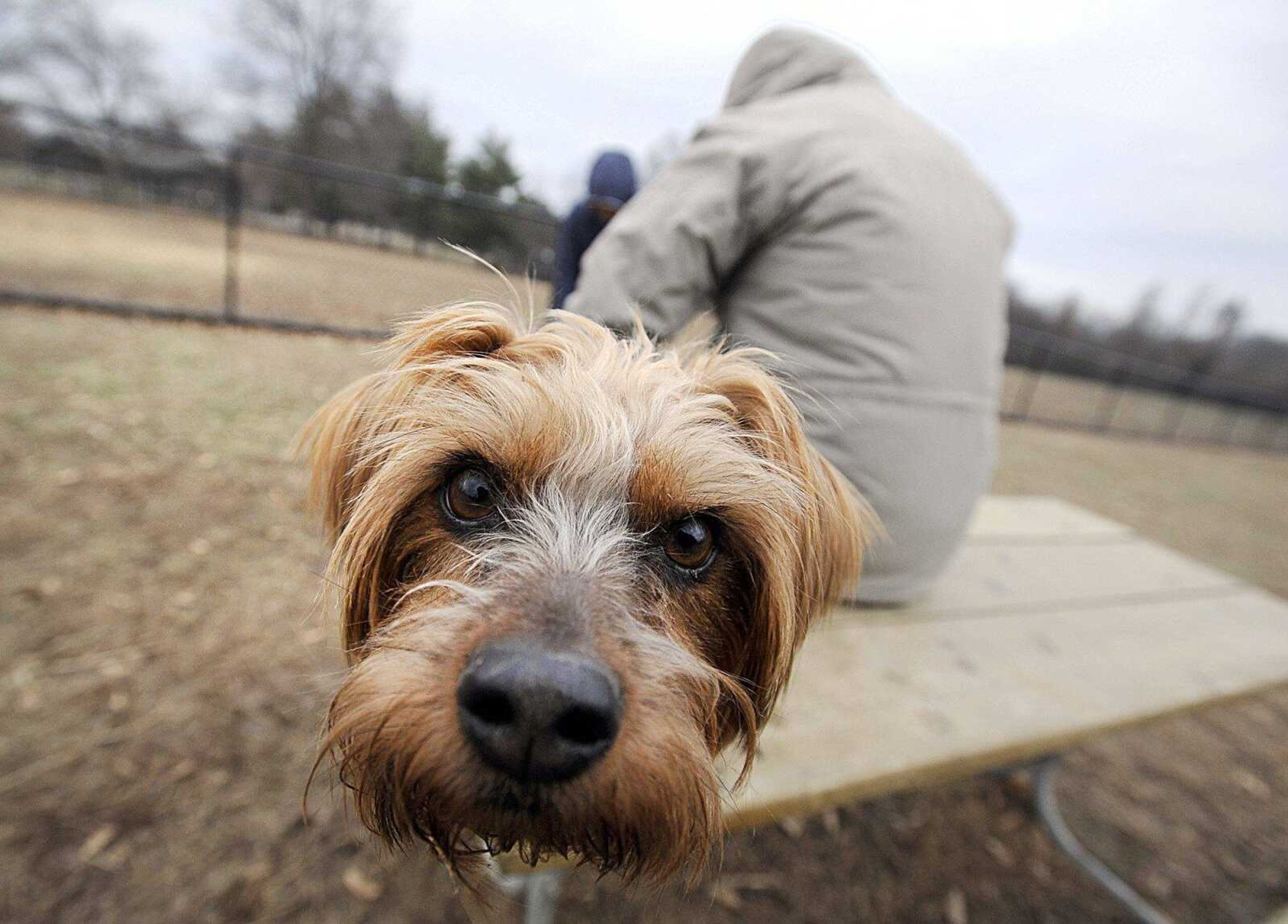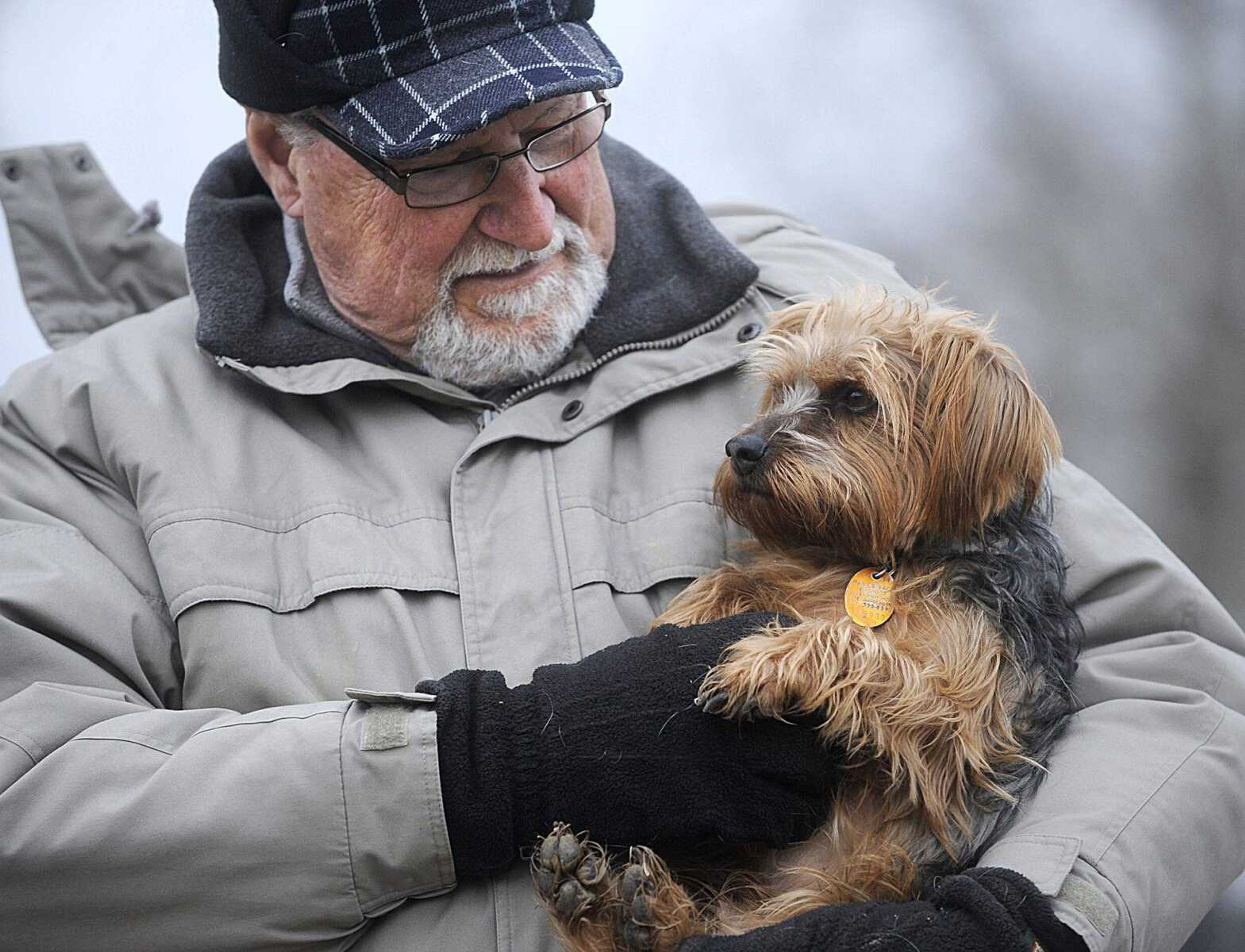Dog play: When is the roughhousing too rough?
Going to the dog park has become something dog owners think they almost have to do. "Our society has gone from thinking dog play is fun to thinking dog play is vital," says Robin Bennett, co-author of "Off-Leash Dog Play: A Complete Guide to Safety and Fun."...
Going to the dog park has become something dog owners think they almost have to do.
"Our society has gone from thinking dog play is fun to thinking dog play is vital," says Robin Bennett, co-author of "Off-Leash Dog Play: A Complete Guide to Safety and Fun."
But not all dogs are suited to this kind of play, experts say -- and even if yours seems to be having a good time, you need to watch closely and keep connected with your dog.
To humans, normal dog play can look rough, with wrestling and body-slamming and face-biting. But that doesn't mean anything goes. Unfortunately, dogs do get injured and sometimes even killed in dog park fights. Safe dog play requires human guidance.
"The subculture in most dog parks is, it's a dog village, this is their time to be a dog, you don't interrupt -- and that's a dangerous subculture," says Sue Sternberg, a trainer who has spent the last few years videotaping and studying dog parks.

To keep dog play safe and fun, know when to calm the situation. That should start before you're even in the park. When dogs run up to the gate and your dog is bouncing with anticipation, don't enter till your dog settles down and the others lose interest and walk away.
"When your dogs are revved up like that, that arousal and aggression are linked," says Bennett. "It's possible for them to get really excited, and it spills over into a fight."
That connection between arousal and aggression is why you should keep a close eye on play and not hesitate to step in.
"What keeps a group of dogs safe is timely interruption," says Sternberg.
So you don't want to be drinking a latte and chatting, or looking at your phone -- unless you're looking at Sternberg's dog park app, "Dog Park Assistant," which helps identify unsafe behaviors.

A few of the play interactions that she considers red flags:
-- Group chase. Chase is great exercise, but Sternberg says it's really only safe when it's two dogs, not a group.
-- Wrestling between two dogs can be good fun, but safe wrestling involves turn-taking -- if one dog pins the other for five seconds or more, it's time to break it up.
-- A dog rolling all the way over is usually a sign of over-aroused play, whether it's caused by impact from another dog or just running out of control.
"If owners see any of those things, that is a cue to go in there and interrupt -- physically get close to the dog and touch and reconnect," Sternberg says.
Even when things are going well, it's a good idea to regularly check in and let your dog know you're still there.
"There's no harm in interrupting, as long as it's not punitive," Sternberg says. "Go in, get your dog and move away. No harm done, and what a great thing to reconnect to your dog."
Recognize signs of distress. If a dog yelps, don't assume it's an accident -- it indicates your dog is in trouble, as does a tucked tail.
"A dog that tucks its tail, even if it's momentary, feels vulnerable," says Sternberg.
Sometimes dogs are asking for help and owners don't realize it.
"There's a kind of jumping up that's, 'Hello, can you not see I'm freaking out here? Take me home!'" says Bennett. "Owners tend to ignore that, thinking the dog is being annoying, but the dog is asking for help."
And if your dog is hiding -- getting between your legs, using you as a barrier or getting under a bench or table -- take the hint.
"So often owners yank their dog out from under the picnic table and go, 'Really, it's fun! Go play,'" says Bennett. "That dog is hiding for a reason."
Your dog may be great with some dogs and not others. Dogs have different play styles -- some like to body-slam, some like to chase, some like to be chased -- and while there's no intrinsically bad style, there are bad pairings. Sternberg's app has a cast of the characters you'll see over and over again, and indicates which combinations make for good play.
There are also dogs who are better off avoiding group play entirely, and there's nothing wrong with that.
"There are dogs who are the greatest dogs in the world, great canine citizens, great with people, and simply shouldn't be with other dogs," says Sternberg. "And that's far better than being the other way around: great with other dogs and you bite all people that you see."
Remember the park is not the only way to meet your dog's needs -- and it's not necessarily the best, says Sternberg: "The most important playmate for a dog is their owner, because play is so enriching, is such a bonding event, is so healthy for mind, body and spirit -- and the most important creature your dog can play with is you."
Connect with the Southeast Missourian Newsroom:
For corrections to this story or other insights for the editor, click here. To submit a letter to the editor, click here. To learn about the Southeast Missourian’s AI Policy, click here.










